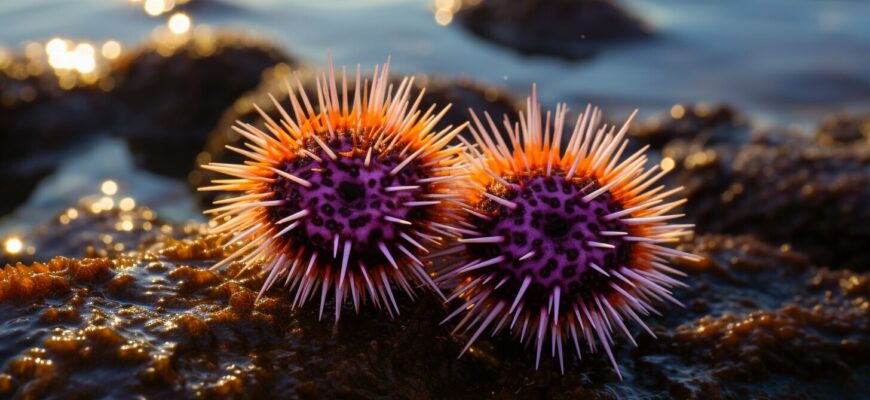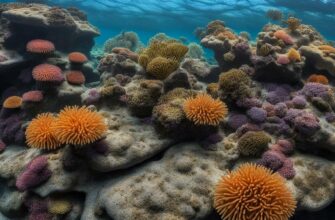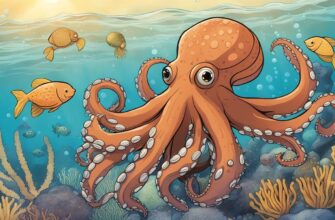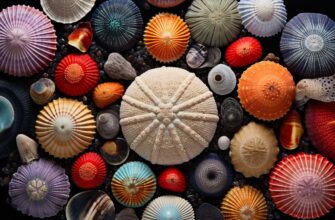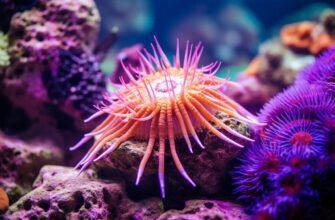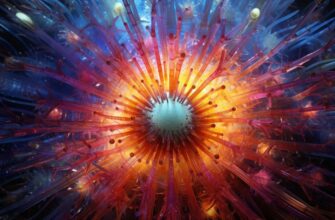Welcome to the exciting world of sea urchin reproduction! Did you know that these fascinating creatures have a unique method of reproducing that sets them apart from other marine animals? In this article, we’ll explore the different types of sea urchin reproduction, including sexual and asexual reproduction, and dive into the environmental factors that can influence their reproductive success. We’ll also uncover the reproductive strategies that sea urchins have developed for their survival. So, let’s get started and delve into the intricate and captivating world of sea urchin reproduction.
- Types of Sea Urchin Reproduction
- Sexual Reproduction in Sea Urchins
- Asexual Reproduction in Sea Urchins
- Environmental Factors Influencing Reproduction
- Reproductive Strategies for Survival
- Spawning Synchronization
- Mate Selection
- Fertilization Success
- What Are the Suitable Habitats for Sea Urchins During Reproduction?
- FAQ – Frequently Asked Questions about Sea Urchin Reproduction
- How often do sea urchins reproduce?
- Do sea urchins have a specific mating season?
- How do male and female sea urchins release their gametes during sexual reproduction?
- Can sea urchins reproduce both sexually and asexually?
- How do environmental factors impact sea urchin reproduction?
- Why do sea urchins use reproductive strategies for survival?
Types of Sea Urchin Reproduction
Sea urchins have two main types of reproduction: sexual reproduction and asexual reproduction.
Sexual reproduction involves the fusion of male and female gametes (reproductive cells) to produce offspring. This process is essential for genetic diversity, which is crucial for the survival of sea urchin populations. During sexual reproduction, male sea urchins release sperm into the water, which is then taken up by female sea urchins. This results in fertilization, and a larva is formed, which later develops into an adult sea urchin.
In contrast, asexual reproduction allows a sea urchin to reproduce without a mate. This process involves fragmentation, where a part of a sea urchin’s body breaks off and develops into a new individual. While asexual reproduction does not create genetic diversity, it can be advantageous in environments where mating partners are scarce or when conditions are unfavorable for sexual reproduction.
| Type of Reproduction | Description |
|---|---|
| Sexual reproduction | The fusion of male and female gametes to produce offspring. |
| Asexual reproduction | The process of fragmentation, where a part of a sea urchin’s body breaks off and develops into a new individual. |
Sexual Reproduction in Sea Urchins
Sexual reproduction in sea urchins is a complex process that involves male and female individuals releasing gametes into the water where fertilization takes place. Both male and female sea urchins have gonads, which are responsible for producing and releasing gametes when it is time for reproduction to occur.
When the timing is right, male sea urchins release millions of sperm into the water while female sea urchins release eggs. Sperm and eggs meet in the open water, where fertilization occurs. The fertilized eggs then develop into free-swimming larvae, which undergo a series of developmental phases before settling onto the ocean floor and becoming juveniles.
The male and female sea urchins involved in reproduction do not have any physical interaction, as the entire process takes place in the open water. The gametes are released through small openings located on the upper part of their bodies. It is interesting to note that sea urchins can change their sex throughout their life, releasing either sperm or eggs depending on the environmental conditions and population densities.
Asexual Reproduction in Sea Urchins
In addition to sexual reproduction, sea urchins are capable of asexual reproduction through the process of fragmentation. This occurs when a sea urchin’s body parts break off and regenerate into new individuals.
Fragmentation can occur naturally, such as when a sea urchin is attacked by a predator, or can be purposefully induced by humans in aquaculture settings.
| Advantages | Disadvantages |
|---|---|
| Can rapidly increase population size | Results in genetic clones with reduced diversity |
| Does not require a mate | Can result in weaker individuals due to reduced genetic diversity |
| Can be a useful method for aquaculture | Can be less successful than sexual reproduction in changing environmental conditions |
While asexual reproduction can have advantages for sea urchins in certain situations, it ultimately reduces genetic diversity and can result in weaker individuals. As such, sexual reproduction remains the primary method for maintaining healthy and resilient sea urchin populations.
Environmental Factors Influencing Reproduction
Sea urchin reproduction is strongly influenced by the environment in which they live. Various factors impact their reproductive success, including:
| Factor | Explanation |
|---|---|
| Temperature | Sea urchins are highly sensitive to temperature changes. Water that is too cold or too warm can cause reproductive failure or delayed development of gametes. |
| Food availability | The amount and quality of food available directly affects sea urchin growth and reproductive output. Insufficient food can lead to smaller gonads and fewer gametes. |
| Water quality | High levels of pollution or low oxygen levels can negatively impact sea urchin reproduction. Poor water quality can lead to deformities in sea urchin larvae or even death. |
| Habitat conditions | The type of habitat in which sea urchins live can impact their reproductive success. For example, areas with strong currents can make it difficult for the gametes to meet and fertilize. |
Overall, it is essential to maintain a healthy and stable environment for sea urchins to ensure successful reproduction and a thriving population.
Reproductive Strategies for Survival
Sea urchins have developed various reproductive strategies to ensure their survival in changing environmental conditions. Let’s take a closer look at some of these strategies:
Spawning Synchronization
Many species of sea urchins have developed the ability to synchronize their spawning with others in their population. By releasing their gametes simultaneously, they increase the chances of successful fertilization and the survival of their offspring.
However, the timing of spawning can be influenced by environmental factors such as water temperature and food availability. Sea urchins must be adaptable to these conditions to ensure successful reproduction.
Mate Selection
During sexual reproduction, sea urchins must find suitable mates for successful fertilization. Some species have developed unique strategies to increase the likelihood of finding a compatible partner.
For example, male sea urchins release pheromones into the water to attract females. Females then choose a mate based on the strength and type of pheromone released. This process ensures that only genetically diverse offspring are produced, increasing the chances of survival.
Fertilization Success
Sea urchins have also developed various mechanisms to maximize the chances of successful fertilization. For example, after releasing their gametes, sea urchins may align themselves in a specific orientation to increase the likelihood of contact between male and female gametes.
In some species, males can also adjust the amount and quality of their sperm to increase the chances of fertilization. These adaptations are crucial for the survival of sea urchin populations in constantly changing environmental conditions.
What Are the Suitable Habitats for Sea Urchins During Reproduction?
Sea urchins, during reproduction, require ideal habitats where sea urchins dwell. The deep ocean waters provide a perfect environment for these fascinating creatures. With an abundance of food, oxygen, and suitable temperature, sea urchins find fertile grounds to release their eggs and sperm, ensuring successful reproduction. These habitats play a crucial role in the survival and growth of sea urchin populations.
FAQ – Frequently Asked Questions about Sea Urchin Reproduction
Here are some common questions about sea urchin reproduction:
How often do sea urchins reproduce?
The frequency of sea urchin reproduction varies depending on the species and environmental factors. Some sea urchins reproduce once a year, while others may reproduce multiple times a year.
Do sea urchins have a specific mating season?
Many sea urchins have a specific mating season, which is often determined by environmental factors such as temperature and food availability. However, some species can mate year-round.
How do male and female sea urchins release their gametes during sexual reproduction?
Male sea urchins release their sperm into the water, while female sea urchins release their eggs. The release of these gametes is often synchronized with other individuals to increase the chances of fertilization.
Can sea urchins reproduce both sexually and asexually?
Yes, many sea urchin species are capable of both sexual and asexual reproduction. Asexual reproduction is often used as a survival strategy in harsh environments or when resources are limited.
How do environmental factors impact sea urchin reproduction?
Environmental factors such as temperature, food availability, water quality, and habitat conditions can all impact sea urchin reproduction. Changes in these factors can reduce the reproductive success of sea urchins and negatively impact their populations.
Why do sea urchins use reproductive strategies for survival?
Reproductive strategies such as spawning synchronization and mate selection are used by sea urchins to increase their chances of successful fertilization and survival. These strategies help to maintain healthy sea urchin populations and ensure the species’ survival.

